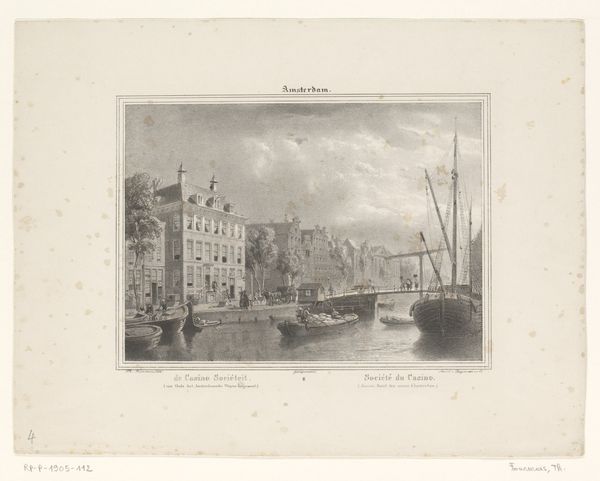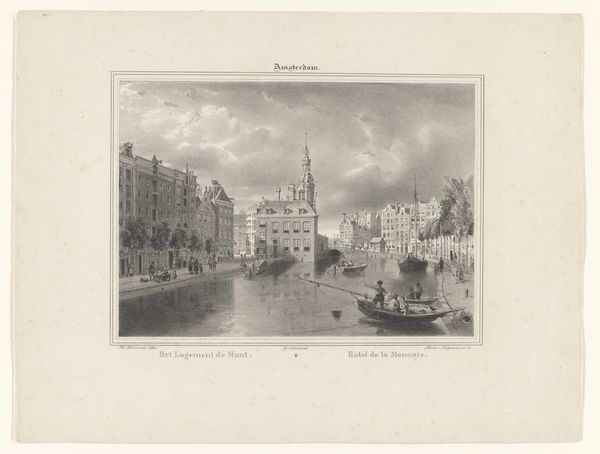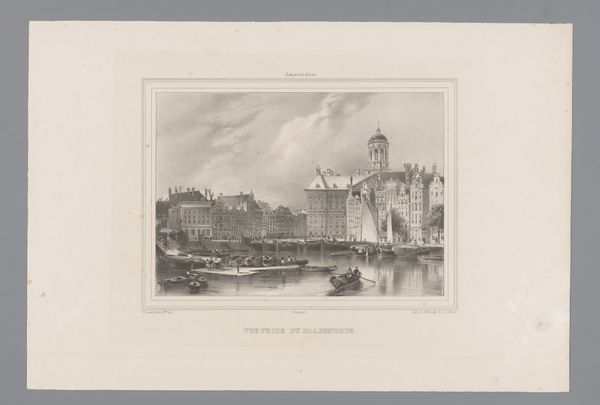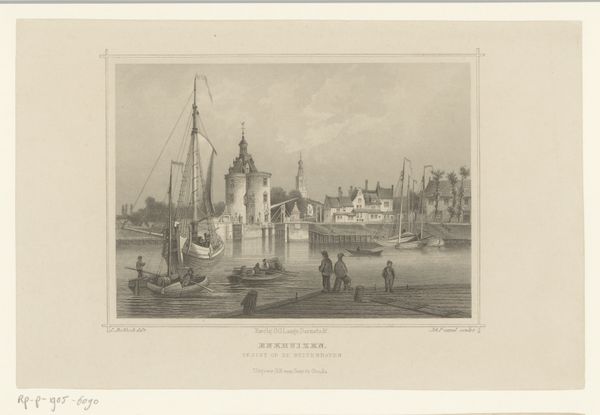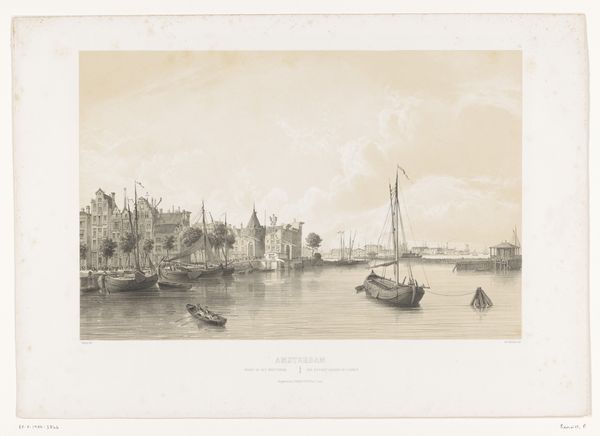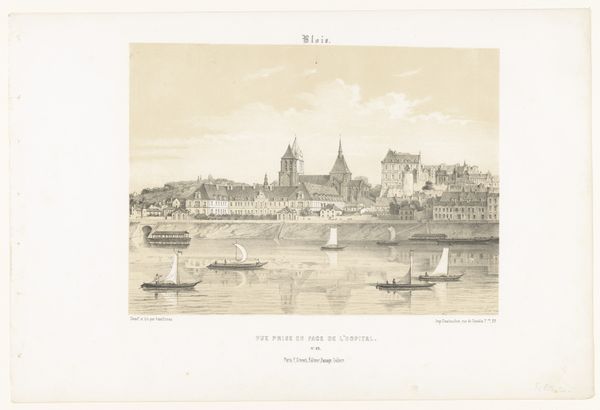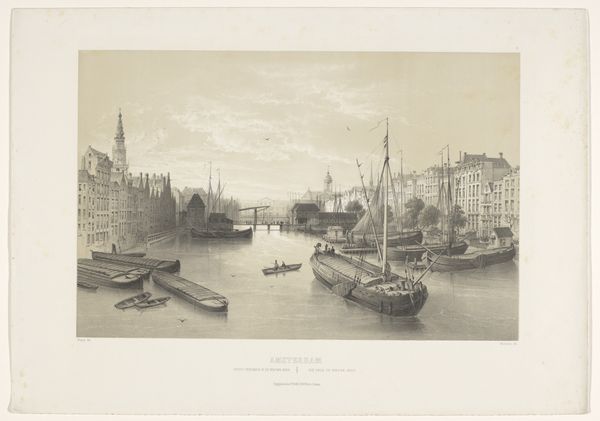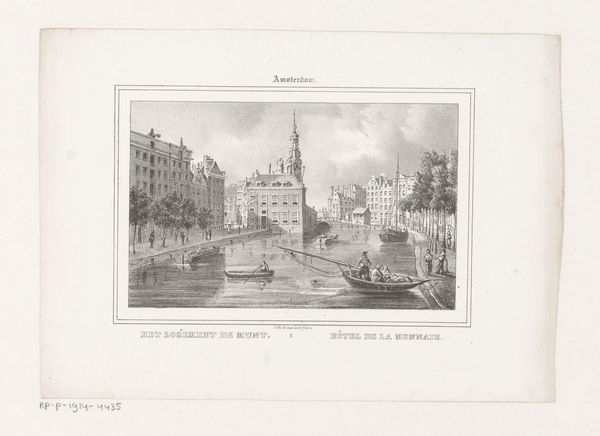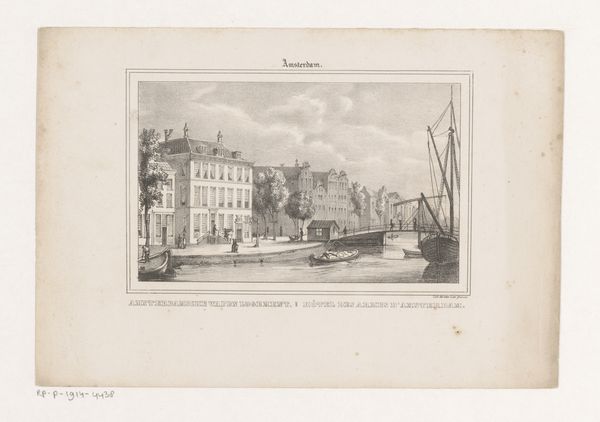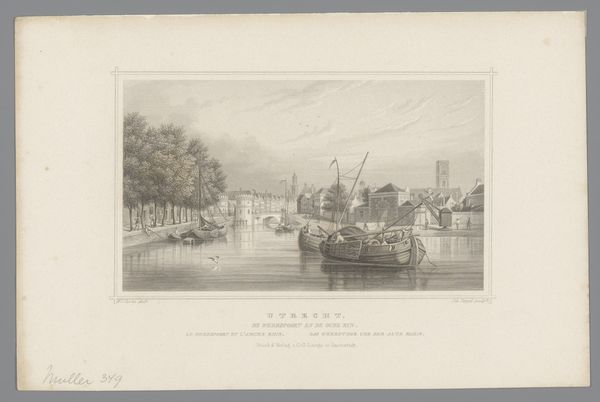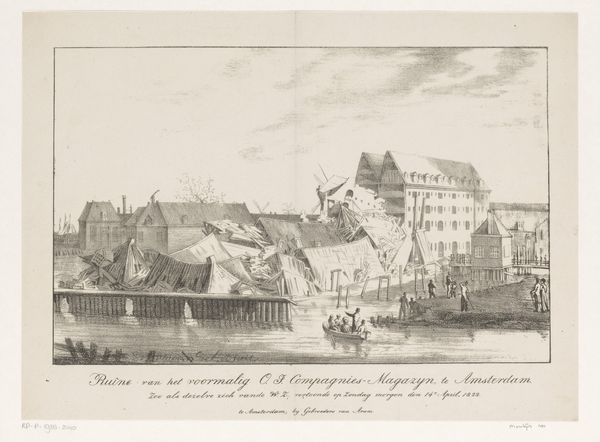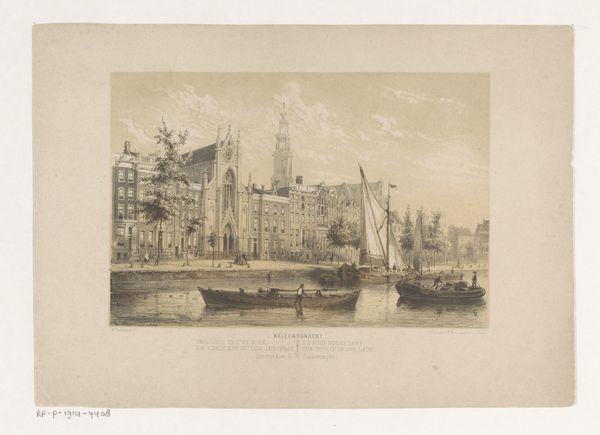
drawing, print, etching
#
drawing
#
dutch-golden-age
# print
#
etching
#
landscape
#
cityscape
#
watercolor
#
realism
Dimensions: height 249 mm, width 330 mm
Copyright: Rijks Museum: Open Domain
Curator: This is Paulus Lauters' "Gezicht op het Damrak," a captivating view of the Damrak in Amsterdam, created sometime between 1827 and 1875. It’s currently held here at the Rijksmuseum. Editor: My immediate reaction is of a city bustling with life, but captured with a muted, almost melancholic stillness. The light seems to diffuse and soften the scene, evoking a sense of nostalgia. Curator: Interesting observation. What jumps out at me is the materiality itself. The drawing and etching techniques employed offer a tangible sense of the labour involved, from the fine lines delineating the architecture to the textures hinting at the water’s surface. And, as a print, it speaks to reproducibility and accessibility – this view of the Damrak circulated more widely thanks to this process. Editor: Indeed. And within those reproducible images lies encoded history. The Damrak itself functions as a powerful symbol. As a major thoroughfare of Amsterdam, it channels the flow of commerce, communication, and cultural exchange. Note how the boats congregate, almost forming little clusters of community against the backdrop of impressive, imposing buildings. Curator: You’re right, the boats suggest networks of trade, distribution chains linking producers, merchants, and consumers across considerable distances. Did Lauters choose etching and drawing deliberately, knowing it could mirror that sense of both intimate, handmade details and the mechanical nature of trade itself? The etcher as craftsman, like the boatman, and the consumer who buys an accessible image as though they would trade for spices from afar? Editor: It’s compelling to think about how this particular view becomes an icon. Think of all the similar images throughout art history of bustling harbors representing not only Amsterdam but any number of European trading centers, it conjures centuries of cultural associations and assumptions about trade and connection. Curator: Ultimately, an image such as this reflects complex exchanges, doesn't it? On one hand a representation of place for pleasure or reference, while at the same time an item created for a burgeoning market place itself. A commercial object reflecting commercial spaces. Editor: I think that it goes deeper: by focusing on that potent symbology, we begin to decode deeper layers of cultural and societal memory. The etching transcends its physical presence. Curator: Precisely, we each arrive at those layers through different paths – for me, that is through an understanding of materials and production; you arrive via symbols. Editor: Yes, and together, we are reminded of how intertwined the visible and tangible truly are, as we begin to understand the cultural work these things perform.
Comments
No comments
Be the first to comment and join the conversation on the ultimate creative platform.
